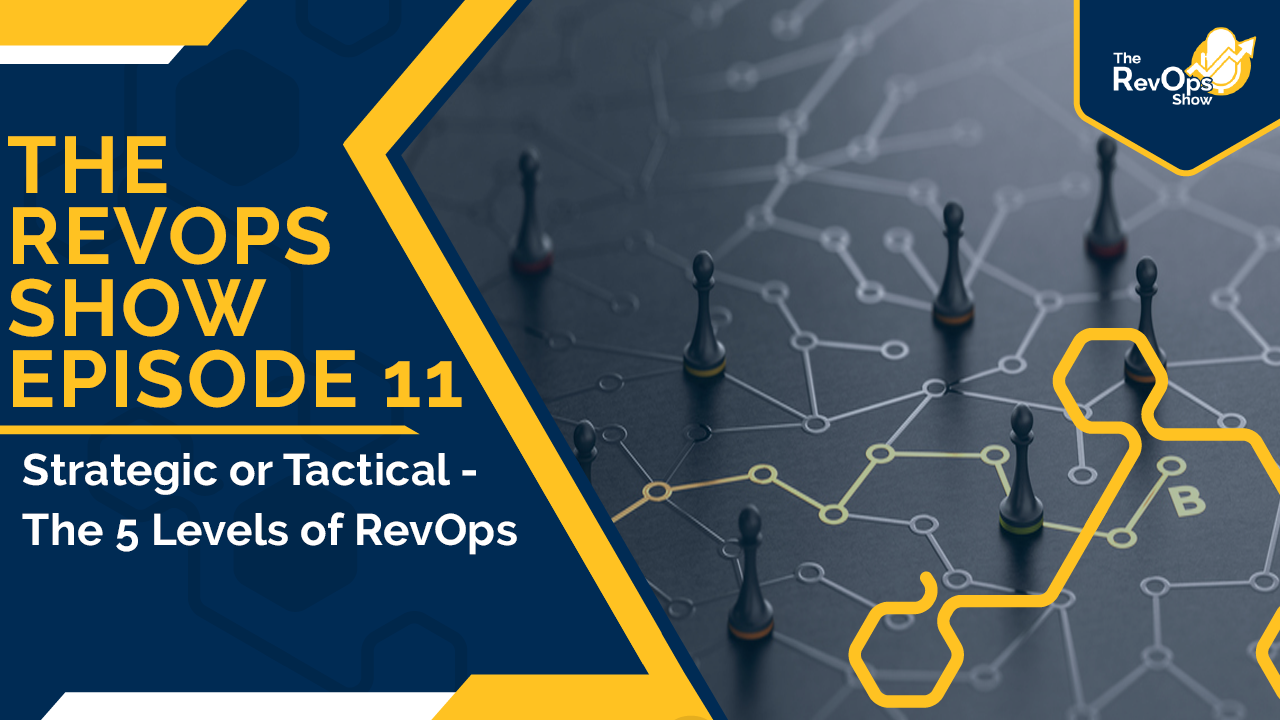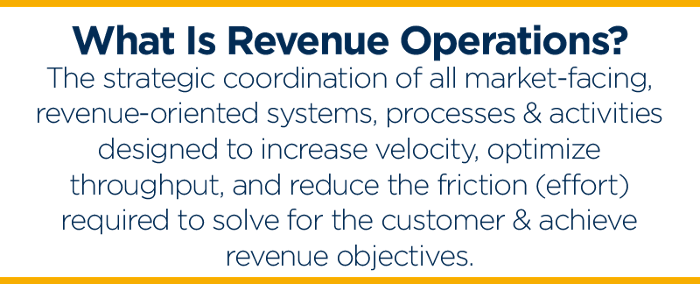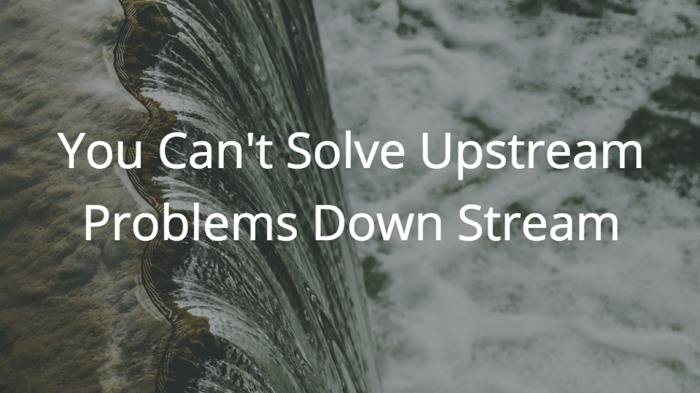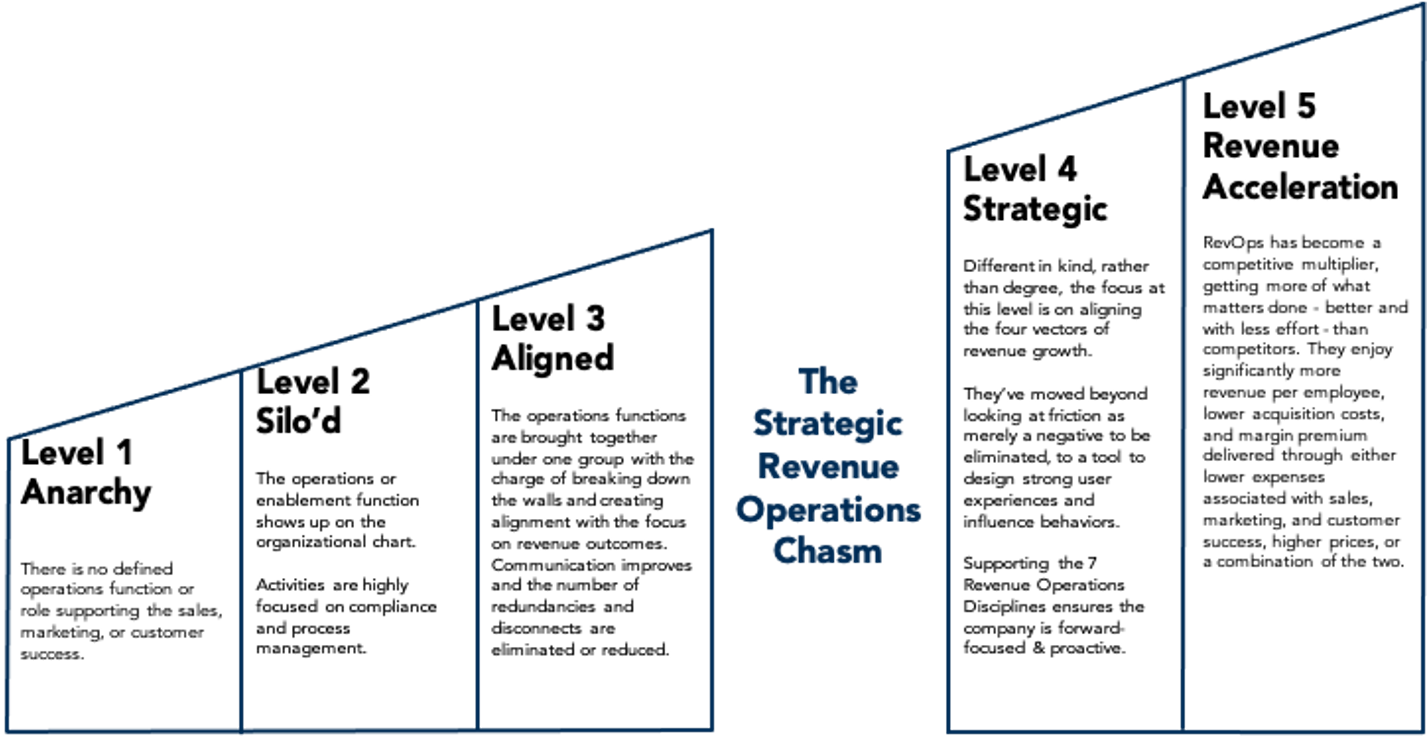Let’s talk about strategic RevOps. What does it mean? How do you do it? Doug and Jess are answering all your questions as they walk through what we call The 5 Levels of Revenue Operations.
Audio:
Video:

Additional Resources:
Show Notes:
How does RevOps differ from Marketing and Sales Ops?
Oftentimes when we talk about RevOps, a lot of people are actually thinking SalesOps; the two get conflated. Jess thinks RevOps encompasses parts of SalesOps, but SalesOps isn’t RevOps. What it sounds like she’s saying is that RevOps and SalesOps is a Venn diagram where there’s overlap, but there’s also mutual exclusivity. Though Jess communicated it that way, she doesn’t believe that. The point she’s trying to make is that RevOps is holistic.
One problem here is when the word RevOps is used, there’s no single definition of it. That’s a problem because we sell, so it would be nice if we could use a term that had consistent meaning. Then you could assess and benchmark.

If we started all over, there were sales operations, there were marketing operations, and even customer success operations. Those items grew into RevOps.
So, what is strategy?
This is something people get wrong all the time. Doug is bold and defines strategy for the world. The strategy definition comes from a Harvard professor, Michael Porter. Strategy is the continuous process of making decisions to manage trade-offs to maximize the probability, to successfully deliver your value proposition, which means, if you don’t have a clear value proposition, you can not be strategic because if you don’t know what your value proposition is clearly, then you can’t make trade-off decisions.
Strategy at its core is making decisions. And it’s not just about making yes decisions, it’s also about making no decisions.
The 5 Levels of RevOps - A Meta Perspective
It’s easy for people to fall into this trap of – are you doing it right or are you doing it wrong? Every organization has RevOps whether they call it out or not. The moment you pay attention to something you are not directly doing, you’ve begun to implement operations. So it’s not a question of “are you doing revenue operations?” It’s a question of what type of revenue operations or what level of revenue operations?
There are a lot of people who strive to be at a higher level than they actually need to be to accomplish their goals, and they start having diminishing returns on trying to strive for this level that they’re not structured or ready for. You have to ask yourself, “What is the game that I’m playing?” What are the trade-offs that are involved that determine what the right level of revenue operations is for you.
Level 1 (The Lowest Level): Anarchy
This is where everyone starts. You have revenue operations, but there’s no defined function, there’s no sales operations manager. The downside to level one is that you have a lot of friction and there’s a lot of drag, but the goal here is not to eliminate friction. Eliminating friction is only at best as a means to an outcome. In this level, it’s about dealing with things in a very ad hoc, reactive way.
Level 2: Siloed
You have sales operations, working operations, success operations. They report differently. There’s a difference between optimizing for the whole, optimizing for throughput, and optimizing for individual function. If you fully optimize your sales and you fully optimize marketing and you fully optimize success, you are actually underperforming because they aren’t going to align.
We operate in a complex system. When you go to a silo, you separate from what the real system is.
Level 3: Aligned
Here there are still silos. The big difference is that communication improves. You’re now addressing points of friction, but you don’t address the causes of friction. You’re dealing with everything downstream, rather than solving downstream problems upstream.

We talk a lot internally about this and Doug has said you can’t solve upstream problems downstream, but the real point of that statement is you can solve downstream problems upstream. And that’s what you should be striving to do. That requires that you embrace the complexity and the complication that exists.
When you cross the chasm into level four, the skies don’t part the waters so you can cross. There’s still going to be some things that pop up. The big difference between the tactical and strategic levels is chaos to controlled chaos.
The Chasm
The first three levels are linear, they’re progressive. Level four is different in kind, you’re doing things differently rather than better. So there’s a chasm that exists because you don’t just jump from level three to level four.
Level 4: Strategic & Level 5: Revenue Acceleration
We’ll hit on both levels here because level five is similar to level four, just more dialed in and institutionalized.
Level four is where you’re still new to strategic RevOps. The key here is, are you taking a system design approach? Are you looking at it as a complex system? Are you managing the core principles of system design that manifests itself? You’re influencing behavior, so you have to look through the lens of intervention of what you want people to do.
Here you’re taking a three zones of execution approach. What’s the transformation, what’s the stuff that we’re building towards, what’s our enablement zone? It enables and enforces a high context culture.
A strategic operations function is saying how are we using this? What’s going to be different? You’re always asking those questions. You’re thinking ahead of the game. The operative question is, to achieve your one-year, 3-year, maybe 5-year objective, what level of capability do you need? Where are you now? Where do you want to go? Where do you want to be?
It’s going to be hard. If it were easy, everyone would be doing it.
Next Steps:
-
Follow Jess, Doug & Imagine on socials for updates on the show or other insights:
-
Doug Davidoff: Twitter - @dougdavidoff | LinkedIn
-
Jess Cardenas: Twitter - @JessDCardenas | LinkedIn
-
Imagine Business Development: Twitter - @DemandCreator | LinkedIn
-
-
Subscribe to the show on Spotify & Apple Podcasts
-
Check out Let's Play RevOps on Twitch for more commentary on this topic
-
Listen to Episode 12: Building a Better Forecast

